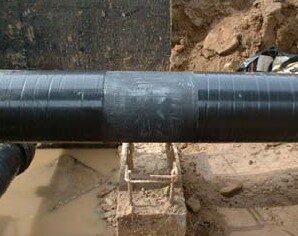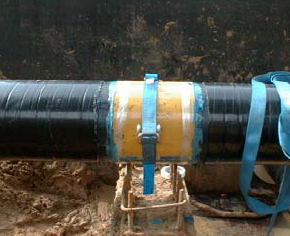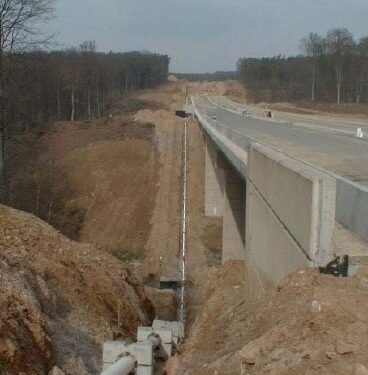Luxembourg
Pipe Details
- New construction
- 305-mm (12-inch) domestic water pipe
Summary
- New construction in a pipeline installation used composite shells to protect pipe coating from potential corrosion from poured concrete supports and to ensure safety and longevity
- 3 layers of Clock Spring at each support location of newly laid pipe prevented corrosion from concrete
- The Clock Spring installation also protects the pipeline from wear caused by movement and vibration, ensuring safety and pipeline longevit
There are many challenges associated with new pipeline construction. Rights of way and permitting become challenges when long lines extend across multiple municipalities or governing jurisdictions. Often, other piping exists in the area, and sometimes, the new construction is being installed to add to existing infrastructure, which means new pipelines are being installed around existing lines.
Other practical considerations for new builds include difficult and varying terrain that must be accounted for during construction and contending with the conditions to which the pipeline will be exposed after installation. Finding ways to protect the lines to mitigate corrosion and damage are vital to the long-term reliability of the line.


A pipeline company evaluated installation challenges in the construction of a 305-mm (12-inch) water pipeline. Wanting to ensure safe installation and dependable service after construction, the company developed a construction plan that required the pipe to be supported at intervals along the line and for particular sections of the line to be coated to retard corrosion.
Part of the installation effort included fabricating supports that could be installed easily along the length of the line and applying corrosion coating that would protect the line from eroding.
Acid in concrete reacts with the epoxy coating on pipes and can lead to corrosion. By installing Clock Spring sleeves at the supports, the installation team provided more solid contact with the support sections and at the same time improved corrosion resistance by installing the Clock Spring product before the concrete was poured. Wrapping the pipe at the pipe supports before pouring the concrete around the repair created an environment that would prevent corrosion at these critical points.
A pipeline company evaluated installation challenges in the construction of a 305-mm (12-inch) water pipeline. Wanting to ensure safe installation and dependable service after construction, the company developed a construction plan that required the pipe to be supported at intervals along the line and for particular sections of the line to be coated to retard corrosion.
Part of the installation effort included fabricating supports that could be installed easily along the length of the line and applying corrosion coating that would protect the line from eroding.
Acid in concrete reacts with the epoxy coating on pipes and can lead to corrosion. By installing Clock Spring sleeves at the supports, the installation team provided more solid contact with the support sections and at the same time improved corrosion resistance by installing the Clock Spring product before the concrete was poured. Wrapping the pipe at the pipe supports before pouring the concrete around the repair created an environment that would prevent corrosion at these critical points.
CSNRI helped the company achieve its goals for safety and pipeline longevity, fitting the line with supports during construction to prevent future problems associated with crevice, galvanic corrosion and erosion.


